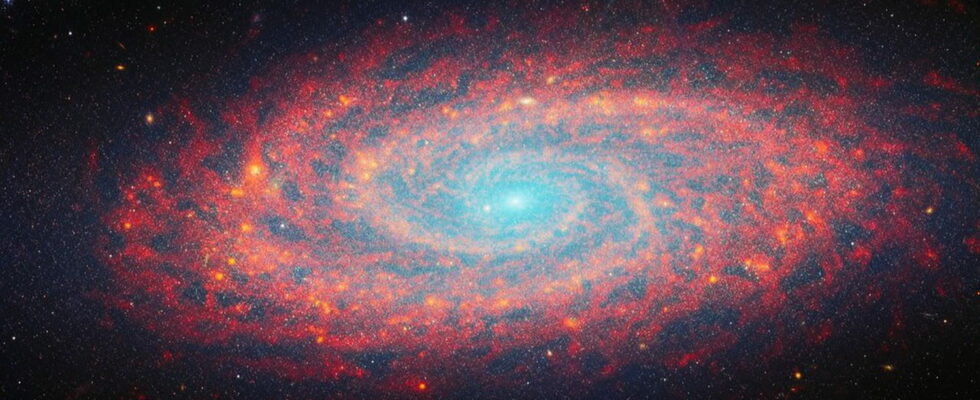A new space telescope will enter service in a few days Thanks to its unique design, and in particular its ultra-high definition camera, it promises to offer us unprecedented images of our universe.
Since its launch in 2021, the James Webb Space Telescope continues to amaze us with spectacular images from the far reaches of the universe. Able to see galaxies formed shortly after the Big Bang, it marked a major advance in modern astronomy. Yet another telescope is poised to surpass this feat in one specific area: mapping our night sky.
Nestled at an altitude of 2,700 meters at the summit of Cerro Pachón, in Chile, the Vera C. Rubin space telescope is indeed preparing to revolutionize astronomy. Equipped with a camera with an unprecedented definition of 3.2 gigapixels (3,200 megapixels!), this technological monster which required 25 years of work will make it possible to explore the universe with a precision never before achieved.
While James Webb focuses on infrared to probe the depths of space and reach back to the earliest cosmic epochs, Rubin takes a different approach. This ground-based telescope is designed to scan large portions of the sky every three days, with an unprecedented capacity to capture vast star fields. Thanks to its unique three-mirror design it will be able to observe nearly a thousand areas each night, providing a regularly updated map of the sky. This continuous monitoring of celestial objects will not only identify asteroids that could threaten Earth, but also track stars and galaxies whose brightness or position changes over time.
The main advantage of the Vera C. Rubin Telescope is its ability to generate enormous volumes of data. Every night it will produce around 20 terabytes of information. With such a definition, this telescope will not only explore the mysteries of dark matter and dark energy, which make up 95% of the universe, but also catalog nearly 20 billion galaxies never seen before. This massive collection of data will help scientists better understand the structure of our cosmos and the evolution of the objects that populate it.
Like James Webb, the Vera C. Rubin Telescope is the result of an international collaboration. France thus contributed to the design of its camera and the captured images will be stored on servers located in Lyon.
Scheduled to be operational in February 2025, the Vera C. Rubin telescope will not only offer striking images. Its mission is much more ambitious. It could, for example, solve one of the most fascinating mysteries of the solar system: the existence of a possible ninth planet, still hypothetical. By scanning the sky for 10 years, Rubin should discover around 17 billion stars, and perhaps reveal unsuspected secrets about our own galactic neighborhood. With his complementary approach to that of James Webb, Rubin promises to profoundly change our understanding of the cosmos.
